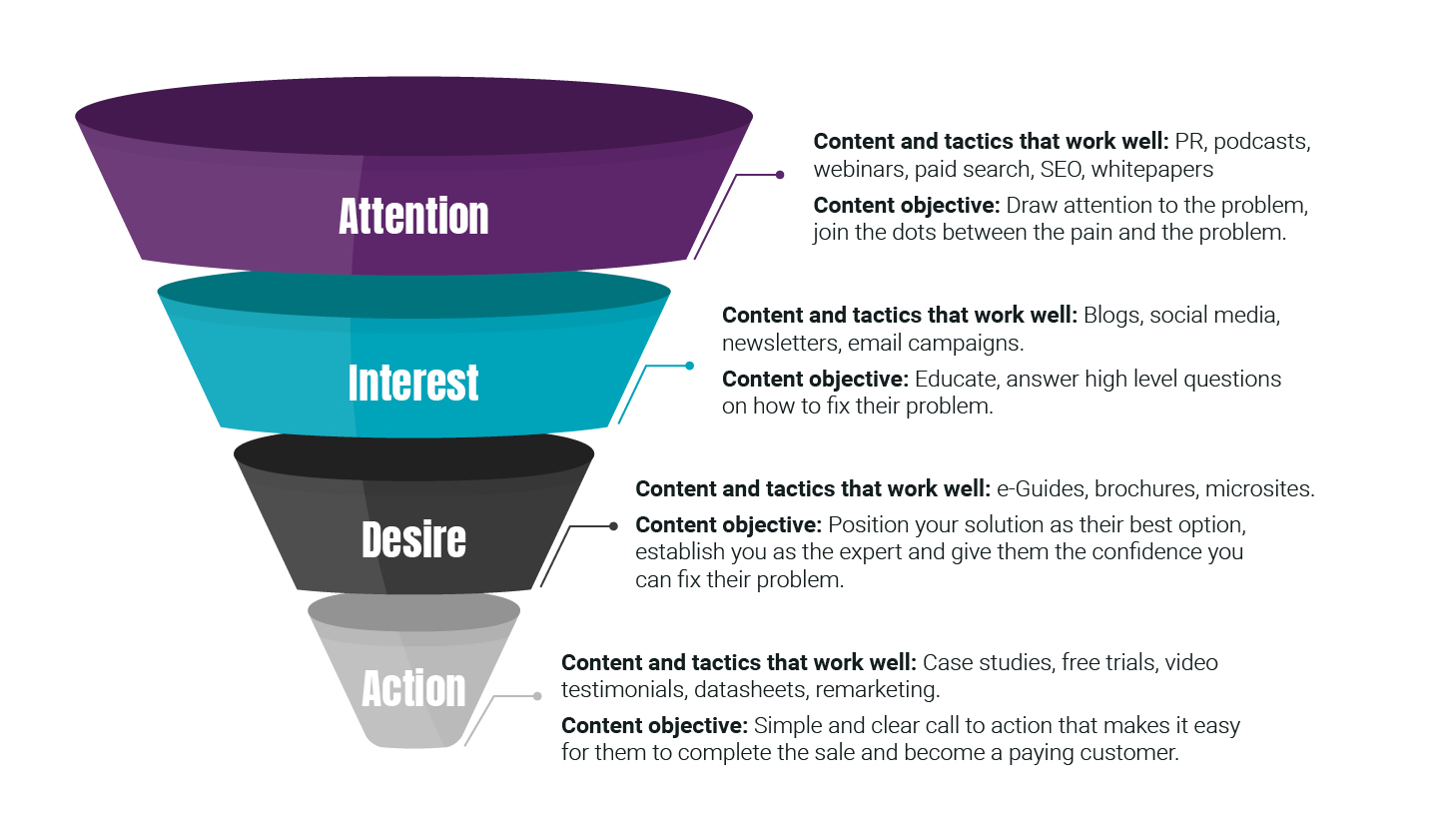If you’ve spent any time learning about marketing, you’re likely familiar with the term “marketing funnel.”
There is a lot of debate surrounding marketing funnels—from who owns it (the friendly sales vs marketing battle!), how many stages there are, which channels to use at each stage to questioning if the marketing funnel concept is even effective anymore.
Add to that the differing terminology being used, it’s no wonder the topic leaves people thinking:
“What the F… UNNEL?!”
In this blog we’re going to be exploring what exactly is a marketing funnel, why they matter and we’ll be sharing our favourite approach to creating funnels.
First, let’s dive into what we mean by a marketing funnel.
What is a marketing funnel?
A marketing funnel is a visual way to show the pathway your customers take from first finding out about your brand to becoming a paying customer.
The power of a funnel is in the insight it gives you on why prospects are / aren’t converting into customers – and using this to optimise your marketing so you can close more sales.
While some funnels can become a little complex, they can actually be very simple. In fact, if you’re reading this thinking you’ve never sat down formally to craft your marketing funnel, the likelihood is you already have one without knowing it. It can be as simple as this…
Prospect:
>> Lands on your blog
>> Clicks link in blog to download free guide and sign-up to email list
>> Receives email and books in a free consultation / product demo
That said, the journey one prospect goes on to become a paying customer will be different from the next. Just because you lay out a pathway for prospects to follow, doesn’t mean it’ll be a linear journey. Add in more than one ideal customer profile, multiple funnels, and a bucket load of content for your audience to consume and before you know it your funnel can start to resemble the iconic Spaghetti Junction!
Do you need a marketing funnel?
It’ll be no surprise that our answer is YES!
Here’s what happens when you get your marketing funnel working well:
Higher conversion rate
All of the content you share with someone going through your funnel is aimed at meeting them where they are at right now so you nurture them until they’re ready to take the next step.
Which means by the time they make their way through your funnel, they’re already really familiar with your brand, they can see you know what you’re talking about, and they trust you can do a good job of fixing the problem they want to fix. Nurturing your audience in this way makes taking the step to say YES to your offering easier.
Better qualified leads
A decent funnel will save your company time – no more speaking to people on sales calls or booking in sales meetings with people who just aren’t ready. In fact, if you’ve nailed your marketing it should be doing a lot of the heavy lifting for you – finding perfect-fit potential customers, pre-qualifying, nurturing until they’re hot to trot, making it much easier for your sales team to hear more yeses.
Consistent flow of new ideal customers
It’s pretty simple – if you want to be consistent with closing new sales, you need to adopt an ‘always on’ approach for generating demand. If you’re not bringing a consistent flow of new ideal customers into your audience you’re at risk of slowing your sales down.
Even during peak times when sales are high and it feels like you can afford to take your foot off the pedal – remember, any work you’re doing now to generate demand won’t come to fruition until a later date, for the most part. On the flipside, if your demand generation activity starts to stall now, you will feel the impact weeks and months down the line.
Optimise your marketing for a better ROI
Your funnel can show you where you’re losing prospects, to help you make changes to your strategy. For instance, if people aren’t moving onto the 2nd stage, you need a better brand awareness campaign.
Ask 10 different marketers about marketing funnels and you’ll probably get 10 different answers (at least). There are a lot of different opinions out there when it comes to how a funnel is structured.
Here’s one of our favourite approaches using the tried and tested AIDA model (attention, interest, desire and action):

While it can feel tempting to focus on the bottom of the funnel activities to bump up sales, you can see now why it’s important not to neglect to attract more attention and interest – i.e. demand generation. You need that consistent flow of new people coming in at the top to increase your sales.
Need help getting started with your demand generation? Or perhaps you’ve got some of your strategy in place but it’s not quite performing as you’d like? Either way, we can help! Get in touch to chat with one of our team.




